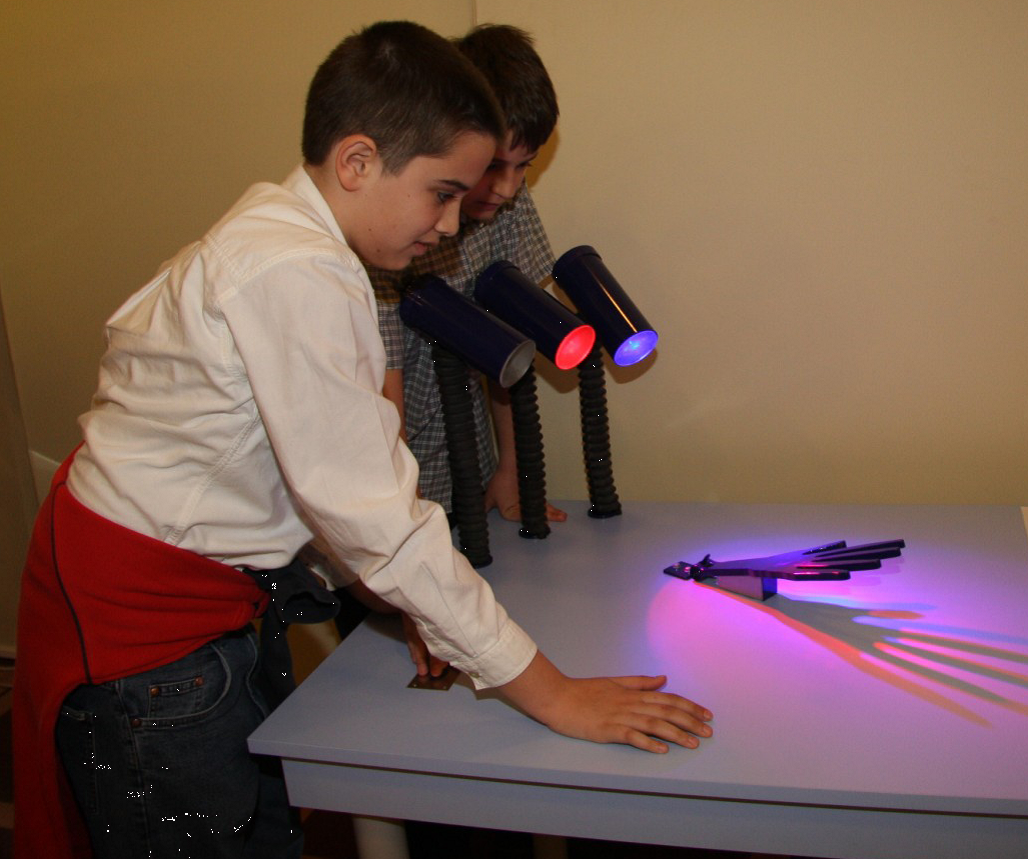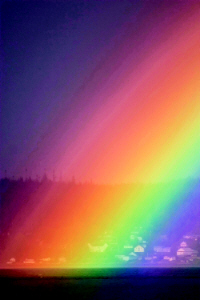The scene you see is an example of additive mixing of colours, what basically means that by mixing the three primary colours, red, green and blue properly, we can get all the colours.
The "hand" adds to the scene in a way that according to the position of the lamp, it hides one of the primary colours, or, at least diminishes its intensity, what results in changing the shades of colour.
The opposite of additive colour mixing is substractive colour mixing. The complex white light contains some components of certain wavelength that can be absorbed depending on the type of material of the given surface, and thanks to this, the reflected ray will get coloured.



